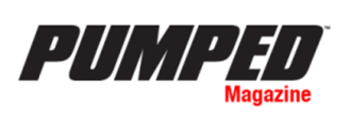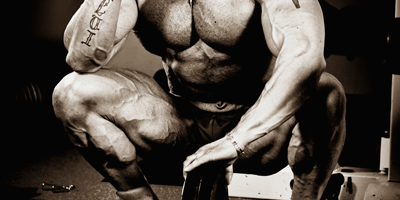Hyperto-WHO? Periodiz-a-WHAT? Sometimes gaining just seems like hard work – the least of which are the weights that produce the grunts and groans in the gym. So many hardcore mass gaining methods have emerged over the years, it’s hard to keep count.
I remember back in the day when Joe Weider developed a series of “training principles” – like the Instinctive Training Principle, or the Pre-Exhaustion Training Principle. Janet Jackson even got into the act back in the 80s with the Pleasure Principle, but I’m pretty sure she was talking about something altogether different.
An outcropping of that, it all just grew from there.
Now, there are German and Bulgarian training methods, methods that employ super-slow fluid movements, and others that are clean, but still include a jerk. Where to begin, you sigh, as you look across a sea of iron and wonder how to make sense of it all.
What happened to the days of “I’ll see you at the gym for leg day, Bob” and whatever happened, happened? You still did squats and leg press, and had 21 inch thighs back then, right?
Some say the many training methods that have emerged are the exact things most of us used to do in the gym, but never put a name to it. Others say they are refined, well-thought-out, training methods responsible for creating a generation of muscular freaks – the likes of which were never seen in the 80s and 90s.
Here are just a few and what they stand for:
#1 GERMAN VOLUME TRAINING:
Goal: To complete 10 sets of 10 repetitions with the same weight for each exercise.
How to do it: Begin with a weight you could lift for 20 reps to failure if you had to, says Charles Poliquin. That’s about 60 percent of a person’s one rep max (1RM) load. If you can bench press 300 pounds for 1 rep, that means you’d use 180 pounds for the set with GVT.
Pros: Supersets and tri-sets allow you to perform a lot of work in a short period of time. The rest-pause method allows you to use heavier weights so you can recruit higher threshold muscle fibers. Eccentric training enables lifter to overcome strength plateaus
Cons: Knowing when to increase weight is largely instinctive; no forced reps, negatives or burns with this method; deep muscle soreness can cause even a seasoned pro to limp for 5 days straight, Poliquin says.
#2 HYPERTROPHY SPECIFIC TRAINING:
Goal: A method of mechanically “loading” the muscle to hopefully induce hypertrophy, HST is based on physiological principles first discovered in a laboratory.
How to do it: Mechanical Load, Acute vs. Chronic Stimuli, Progressive Load, and Strategic Deconditioning are phases of the program, that include principles such as: Higher reps for lactic acid to prepare muscles and tendons for future heavy loads, using compound exercises to maximize effects of loading on as much muscle as possible, using two week blocks per rep range to accommodate loads without injury, and limiting the number of sets per exercise per workout to just two. Repetitions will decrease every two weeks during the cycle.
Pros: Scientific, linear method of training that employs logic and common sense when it comes to injury prevention of muscles and tendons.
Cons: Too complex for a lot of people, and too much to determine prior to a workout.
#3 DUAL FACTOR HYPERTROPHY TRAINING
Goal: To supercede regular training thought by looking at big picture fatigue and exertion, rather than day-to-day exertion, fatigue and rest.
How to do it: Using higher frequency/ loading weeks, and reduced frequency training weeks, Dual Factor Hypertrophy Training looks at big picture growth, fatigue and rest. Unlike the “supercompensation” theory of bodybuilding (Single Factor) training that believes training is catabolic and depletes substances such as glycogen and protein synthesis, DFHT relies upon the idea that there are both positive and negative effects of training. Timing of individual workouts (such as organized splits) is unimportant in DFHT. It’s peaking and unloading of fatigue and strength that matters. Supercompensation views one workout as a period of fatigue. In Dual Factor HT, as much as six weeks might represent a period of fatigue, while up to four weeks may represent a period of rest. (Not four weeks off, but four weeks difference in intensity and frequency).
Pros: Counter-intuitive to bodybuilding’s supercompensation theory, which says all things must rest after being depleted, it follows the leader of traditional channel strength training in mainstream sports that pushes through both rest and fatigue as if there were no walls.
Cons: Complicated for average Joe. Big thinkers, this is esoteric heaven!
#4 POWER – REP RANGE – SHOCK TRAINING
Goal: Purports to stimulate growth without workout plateaus by stimulating fiber types within muscle bundles, and says that the pathway to muscle hypertrophy is via variation.
How to do it: The POWER phase focuses on attacking high-threshold Type IIA and Type IIB muscle fibers with heavily weighted compound exercises, in a 4 to 6 reps to failure range. Three to five minute rests between sets characterize this phase. Week two is the REP RANGE phase, which targets fibers that lie in “intermediary” places between Type I and Type II fiber. Rep ranges on exercises (which predominately utilize machines or cables), increase from 7 to 9, 10 to 12, and 13 to 15 in successive sets of one exercise. Rest times decrease to 2 minutes. The SHOCK phase of week three employs intensity-driven techniques of pre-exhaustion, super sets, drop sets and anything that will shock the muscle into growth. Free weights, cables and machines are all used in this week. No rest times during this phase, just cardiovascular workouts in between.
Pros: Can be utilized by, and tailored to, a beginner, intermediate or advanced level bodybuilder. Perfect for off season and pre-contest, but particularly suited to pre-contest; good for women.
Cons: Finding enough weights and weight stations available to stage your attack during the SHOCK phase may be challenging – and annoying to fellow lifters.



